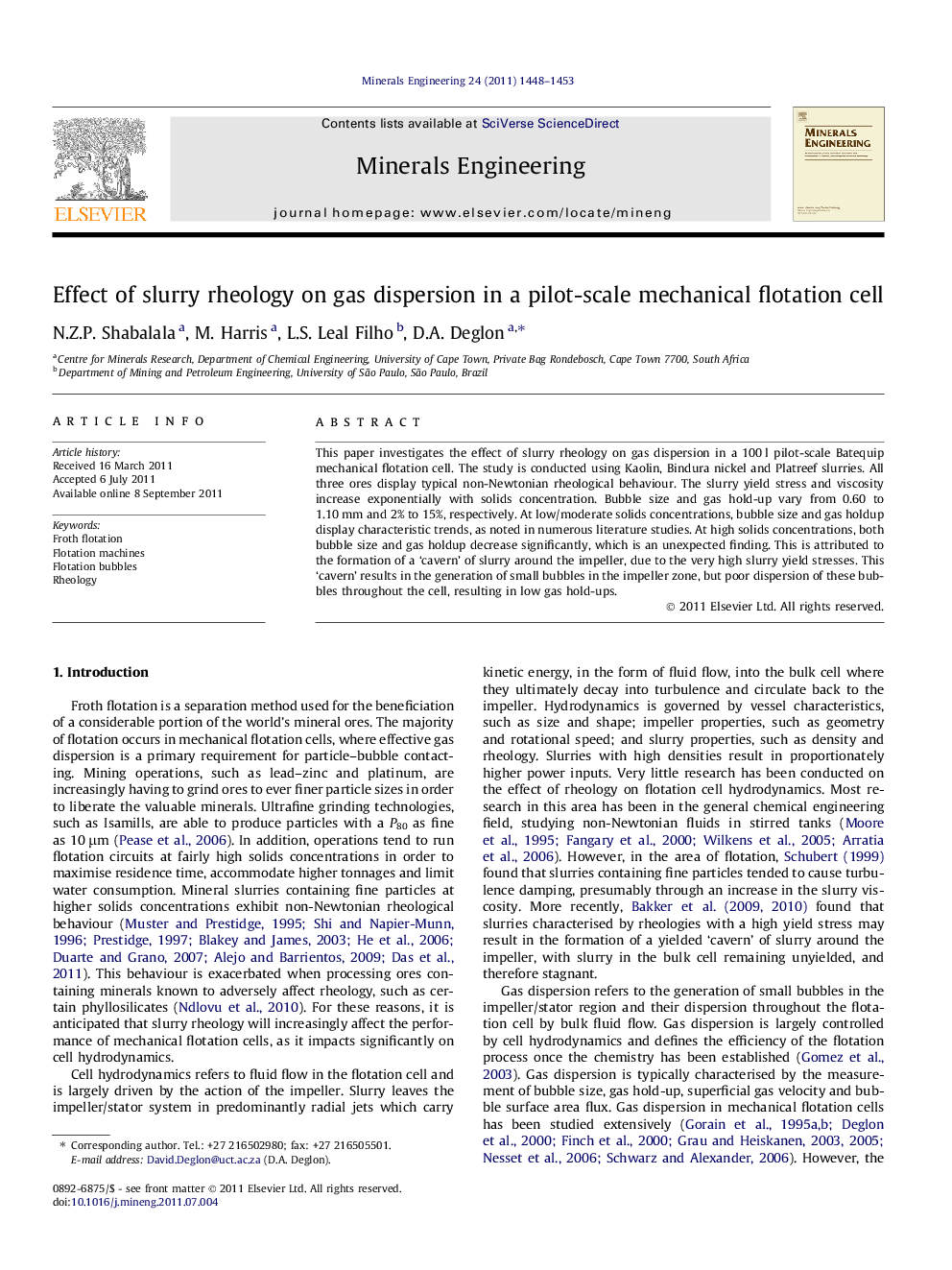| Article ID | Journal | Published Year | Pages | File Type |
|---|---|---|---|---|
| 233706 | Minerals Engineering | 2011 | 6 Pages |
This paper investigates the effect of slurry rheology on gas dispersion in a 100 l pilot-scale Batequip mechanical flotation cell. The study is conducted using Kaolin, Bindura nickel and Platreef slurries. All three ores display typical non-Newtonian rheological behaviour. The slurry yield stress and viscosity increase exponentially with solids concentration. Bubble size and gas hold-up vary from 0.60 to 1.10 mm and 2% to 15%, respectively. At low/moderate solids concentrations, bubble size and gas holdup display characteristic trends, as noted in numerous literature studies. At high solids concentrations, both bubble size and gas holdup decrease significantly, which is an unexpected finding. This is attributed to the formation of a ‘cavern’ of slurry around the impeller, due to the very high slurry yield stresses. This ‘cavern’ results in the generation of small bubbles in the impeller zone, but poor dispersion of these bubbles throughout the cell, resulting in low gas hold-ups.
Graphical abstractGas holdup was found to decrease significantly at the highest solids concentrations. This was accompanied by a significant reduction in bubble size, which is an unexpected finding. The unexpected decrease in bubble size and gas holdup is attributed to slurry rheology. At the high solids concentrations, slurries for all three ores have significant yield stresses, resulting in the formation of a ‘cavern’ of slurry around the impeller. This leads to the generation of small bubbles in the impeller zone, but poor dispersion of these bubbles throughout the cell, resulting in low gas hold-ups.Figure optionsDownload full-size imageDownload as PowerPoint slideHighlights► This paper investigates the effect of slurry rheology on gas dispersion in a mechanical flotation cell. ► The study uses Kaolin, Bindura nickel and Platreef ores (non-Newtonian slurries). ► At high solids concentrations, bubble size and gas holdup were found to decrease significantly. ► This is attributed to the formation of a ‘cavern’ of slurry around the impeller (due to the yield stress). ► This ‘cavern’ leads to the generation of small bubbles in the impeller, but poor dispersion of these bubbles.
